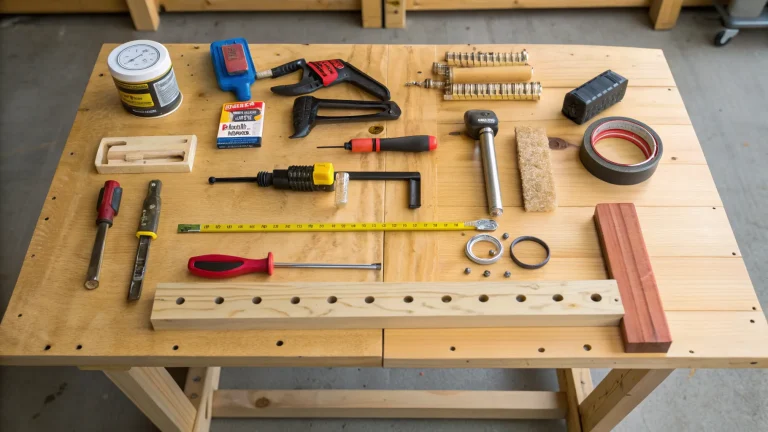More than once I’ve been in the middle of a weld—metal cleaned, joints fitted tight, everything ready to go—only to squeeze the trigger and realize my welder isn’t feeding wire. It’s one of the most frustrating problems any MIG welder runs into, whether you’re running flux-core on a small repair or using solid wire with shielding gas for clean, strong beads. When the wire doesn’t feed, you lose arc control, waste filler wire, and risk weak joints that can compromise the structural strength of your project.
I’ve seen it happen on stainless welding, mild steel, and even thin sheet metal, and the culprit is usually worn liners, drive roll setup/tension, or simple configuration mistakes. A bad feed doesn’t just slow you down—it hurts weld quality, safety, and efficiency. Let’s break down why your welder might not be feeding wire and the fixes that actually work in the shop.

Wire Feeding in MIG Welders: The Foundation
Before we chase ghosts in your machine, let’s level-set how wire feeding works. Think of it as a chain: spool → drive rolls → liner → contact tip. If any link binds, feeding stalls.
How Does Wire Feeding Work in a MIG Setup?
The wire spool feeds into drive rollers that grip and push it through a liner in the gun cable toward the contact tip at the nozzle. A motor turns those rollers when you pull the trigger; the wire becomes your consumable electrode in the arc. If the path is obstructed—or the rollers can’t grip correctly—feed becomes erratic or stops.
Most hobby and light-industrial multiprocess machines (e.g., many “Handler” and “Multimatic” class units) use a two-roll system with a dual-groove drive roll, while heavier industrial feeders often use 4-roll drives for maximum traction on larger wires. [4][5]
Match process to consumables: solid ER70S-6 with C25 (75% argon/25% CO2) is the common mild-steel setup; 90/10 argon/CO2 is also used at higher heat for spray transfer. [1] Push-pull guns or spool guns are preferred for aluminum because they reduce wire buckling over long liners. [10]
Important: Arc stability depends on pairing voltage, wire feed speed (WFS), and stickout, but classic birdnesting (a tangled mass behind the rolls) is usually a mechanical feed issue—wrong roll type/tension, a damaged liner, or the wrong tip—not simply a voltage/WFS mismatch. [7][8]
Field habit: before every job, hand-feed a foot of wire through the gun (machine off). Feel unusual drag? Investigate the liner or tip before you strike an arc.
Solid Wire vs Flux-Core Wire: Which One’s Giving You Grief?
Solid wire (e.g., ER70S-6) is copper-coated for smooth feeding and typically runs with C25 shielding gas for mild steel. [1] Flux-cored splits into two families:
Self-shielded FCAW (FCAW-S), like AWS E71T-11 (e.g., Innershield® NR-211-MP), needs no external gas and is designed to run on DCEN (electrode negative). [2]
Gas-shielded FCAW (FCAW-G), like AWS E71T-1, does require shielding gas (100% CO2 or mixes like 75% Ar/25% CO2) and runs on DCEP (electrode positive). [3]
Flux-core wires are softer and more abrasive than solid wire, so they need knurled V-groove rolls and careful tension to avoid crushing or shaving. [8]
Pro tip: For thin sheet under 1/4 in, 0.023–0.030 in solid wire is forgiving with C25. Step up to 0.035 in for heavier sections. If you must weld outdoors without gas, choose a self-shielded flux-core rated for your thickness and polarity (DCEN). [1][2]
Common Causes of Wire Feed Problems: Pinpointing the Culprit
Over 15 years slinging arcs, these issues caused ~90% of my feed headaches. None are exotic—just overlooked setup and maintenance.
Is a Dirty or Kinked Liner Stopping Your Wire?
The liner guides wire from the drive rolls to the tip. Dust, spatter, tight loops, or a kinked cable create drag and erratic feed. Blow out or replace clogged liners; select the liner sized for your wire range (e.g., 0.023–0.030 in or 0.035–0.045 in) and trim per gun specs—skip oversized “one-size-fits-all” liners. [6]
Drive Rollers Slipping: Tension Troubles Exposed
Wrong roll type or tension is a top cause of slip and birdnesting. Use V-groove for solid steel, V-knurled for flux-core, and U-groove for aluminum; then set tension only as high as needed for steady feed. [8]
How to adjust: Feed into a block of wood; increase tension until wire feeds without slipping when gently obstructed, avoiding excessive pressure that flats the wire. Many OEM manuals and trainers teach this practical check. [7]
| Wire Type | Recommended Drive Roll | Why It Works Best | Pros | Cons |
|---|---|---|---|---|
| Solid mild steel | V-groove | Good grip without deforming | Smooth feed, less wear | May slip if tension is too low |
| Flux-core | V-knurled | Tooth bite on tubular wire | Better traction | Over-tension can shred jacket |
| Aluminum | U-groove | Gentle on soft wire | Reduces galling | Lower grip on hard wires |
| Stainless steel | V-groove | Balanced grip & durability | Versatile | Needs frequent cleaning |
Contact Tip Wear: The Silent Feed Saboteur
Worn or spatter-clogged tips bind wire or cause burnback. For steel, match tip bore to wire size (e.g., 0.035 in tip for 0.035 in wire). Upsizing one step is common mainly for aluminum or very high heat where expansion occurs. Heavy-duty copper/chrome-zirconium tips last longer at high amperage. [6]
Wire Spool Issues: From Rust to Wrong Size
Rusty or moisture-exposed spools drag and jam, especially with self-shielded flux-core. Store wire indoors, protected from condensation; do not use visibly rusty wire. [11] Trim the bent “pigtail” end square before threading to avoid snagging.
Electrical Gremlins: Power and Connections
Blown fuses, loose trigger leads, or a tired feeder motor can mimic feed failure. Also confirm your work clamp connection: attach to clean metal as near the weld as practical to reduce arc instability and burnback risk. [12]
Step-by-Step Troubleshooting: Hands-On Fixes for Feed Failures
Step 1: Power Down and Visual Inspection
Unplug the welder. Open the spool cover; check for tangles or debris. Hand-rotate the drive; any grinding or binding suggests further tear-down.
Step 2: Check and Adjust Drive Roll Tension
Release tension, cut the wire end square, re-thread, then re-engage. Perform the “block test” (press the wire against wood): increase tension until feed is steady without shaving the wire. Swap to the correct roll type if needed. [7][8]
Step 3: Clean or Replace the Liner
Disconnect the gun, remove the liner, and blow it out. If you find flats, kinks, or heavy debris, replace it with the correct range (e.g., 0.035–0.045 in) and trim per the gun manual. [6]
Step 4: Inspect and Swap the Contact Tip
Remove the nozzle, check the tip for spatter and oval wear. Replace with the right size, snug but not over-tight. For persistent burnback, verify polarity and clamp connection. [12]
Step 5: Verify Process Settings & Polarity
Solid wire GMAW typically uses DCEP with C25 on mild steel. Self-shielded FCAW wires like E71T-11 use DCEN and no gas; gas-shielded FCAW wires like E71T-1 use DCEP with CO2 or mixes (e.g., 75/25). [1][2][3]
Preventive Maintenance: Keep Feed Issues at Bay
For production shops, clean the drive and change tips routinely; hobby use can be on a lighter cadence. Store wire in a dry area, protect from condensation, and vacuum the drive box periodically. [11]
Coiling tip: Lay the gun cable in gentle loops or figure-8s to avoid sharp bends that kink liners.
Advanced Tips for Flux-Core and Specialty Feeds
Self-shielded flux-core (FCAW-S): Use a drag (pull) technique and longer stickout (typically ~5/8–3/4 in, per wire size) to let gases escape; keep travel angle ~10–20°. [9]
Aluminum: Favor push-pull or spool guns with U-groove rolls and 100% argon; keep cables straight to prevent buckling. [10]
Stainless: For short-circuit GMAW, tri-mix (He/Ar/CO2) is commonly recommended; for spray transfer, argon-rich mixes with small O2 can be used—check your procedure and filler datasheet. [1]
When to Upgrade: Signs Your Welder Needs More Than a Tweak
If feed issues persist after proper setup and consumable replacement, the motor, gearbox, or feeder design may be the bottleneck. Upgrading to a feeder with a robust drive (and, for aluminum, a push-pull system) can materially improve feed stability. [10]
Wrapping It Up: You’re Ready to Tackle Any Feed Fiasco
From liners and rolls to polarity and tips, wire feed depends on correct components and clean paths. Inspect before you arc, set the right roll type and tension, verify polarity, and store consumables properly. Do that, and your wire will feed smooth and your beads will hold up.
Why Won’t My Flux-Core Wire Feed Even After Cleaning?
Self-shielded flux-core often stalls when rolls are over-tight (crushing the tubular wire) or the wire absorbed moisture. Loosen tension slightly, switch to knurled V-rolls, and keep spools in a dry container. If you’re running E71T-1, remember it needs gas and DCEP—it isn’t the same as E71T-11. [2][3][8][11]
How Do I Know If My Liner Is Too Long or Wrong Size?
Use liners matched to your wire family and size band (e.g., 0.023–0.030 in or 0.035–0.045 in). Oversized IDs let wire “slap” and chatter; undersized binds. Trim to gun length per the manufacturer, seat fully at both ends. [6]
What’s Causing Birdnesting in My Drive Rolls?
Usually a mechanical issue: wrong roll type/tension, worn tip, clogged or kinked liner, or tight cable loops near the feeder. Correct those first—birdnesting isn’t primarily caused by voltage/WFS mismatch. [7][8]
Can a Bad Ground Cause Wire Feed Problems?
Yes—poor work clamp contact shortens arc length intermittently and can cause burnback that stalls feeding. Clamp on clean metal as near the weld as practical. [12]
Should I Add Lube to My MIG Wire for Better Feeding?
Skip unapproved lubricants; they attract dust and can cause porosity. If needed, use clean, manufacturer-approved felt wire wipers and keep them dry. [7][8]
References
- MillerWelds. “What Gas is Best for MIG Welding Mild Steel?” (C25/C10 and use cases). millerwelds.com.
- Lincoln Electric. “Innershield® NR-211-MP” (E71T-11; DCEN, no external gas). lincolnelectric.com.
- Pinnacle Alloys. “PREMIER 71 PLUS (E71T-1C/1M, 9C/9M)” (Gas-shielded; DCEP). pinnaclealloys.com.
- MillerWelds. “Multimatic 215 — Quick Select drive roll (two grooves).” millerwelds.com.
- EWM. “Difference between 2- and 4-roll wire feed systems.” ewm-group.com.
- Bernard/Tregaskiss. “AccuLock™ S MIG Gun Consumables” (tip matches wire; liner range sizing). bernardtregaskiss.com.
- MillerWelds. “How to Troubleshoot MIG Welding Problems” (birdnesting, burnback). millerwelds.com.
- American Torch Tip. “Top 5 Causes of Birdnesting (and fixes).” americantorchtip.com.
- MillerWelds. “Flux-Cored Welding: The Basics for Mild Steel” (technique & stickout). millerwelds.com.
- MillerWelds. “Push-Pull Guns for Aluminum” (feed stability). millerwelds.com.
- Lincoln Electric (via Gas & Supply). “Storage for MIG/Subarc Wires” (keep dry; avoid rust). lincolnelectric.com.
- MillerWelds. Safety guidance: “Connect work cable near weld as practical.” millerwelds.com.



